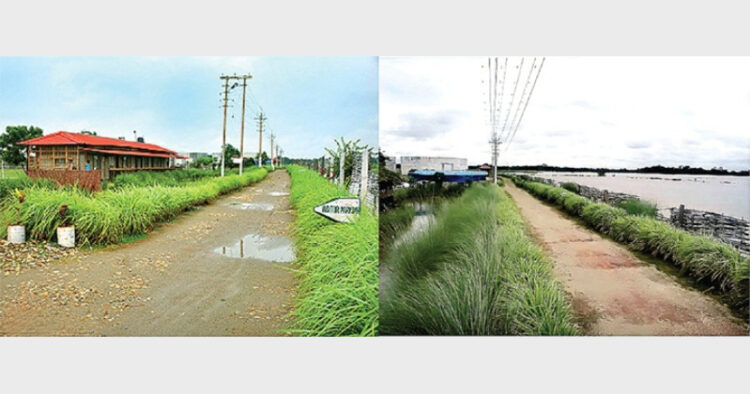By facilitating investments in the Clean Development Mechanism, the Government of India could reap the double benefit of climate mitigation and economic development
Pranjit Agarwala
Cleanopolis Energy Systems India Pvt. Ltd. is a clean technology initiative located in the middle of the lush green paddy fields of rural Sonitpur district of Assam. Promoted by local educated entrepreneurs, the small-scale biomass gasification unit, now in the pre-commissioning stage, will convert organic waste to sustainable energy and also produce organic fertilizer. The unit will involve the local populace in an integrated system of waste management that will improve the quality of life of the community at large. Besides generating rural employment directly, the unit will also boost the rural economy by providing farmers and their womenfolk with supplementary income from agro as well as from kitchen waste, cattle, dung, poultry litter, backyard bamboo groves and wetland flora.
Cleanopolis aims to address two critical issues of socio-economic development in rural areas, electricity and waste disposal. It is also a sincere effort, however small, to reduce the import of heavily subsidised petroleum products and chemical fertilizers, both of which are crippling our economy and environment.
The growing degradation of the earth’s biosphere has forced the world’s economists, environmentalists, planners and policymakers to focus on sustainable development. Since the industrial revolution, the fast speed at which the earth’s resources have been relentlessly exploited for economic development, mainly by the industrialised nations, has severely damaged the earth’s environment and eco-system. There are now genuine fears that if the developing economies of the world continue the same pattern of resource utilisation there will be no resources left for future generations. Resources include land, water, minerals, forests, flora and fauna, fossil fuels and biomass.
The global economy is still dependent on fossil fuels like coal, oil and natural gas for energy. 90% of India’s electricity is produced from thermal and hydel sources. But the country’s power generation remains far short from the demand because the growth in the sector has been affected by shortage of crude oil, coal and natural gas production, rising energy import bills and increasing environmental restrictions.
There are three main sources of renewable energy—solar, wind and biomass. Power generation from solar and wind energy is subject to climatic conditions and the output may fluctuate according to the season or weather. Power generation from biomass is much more uniform as it depends mainly on agro-waste and domestic animal dung which are easily and abundantly available throughout India’s rural hinterland. In many Indian states biomass gasification plants are providing a solution for off-grid decentralised power generation and playing a significant role in rural electrification.
Ironically, despite such advantages, states with agro-based economies have not fully utilised the potential form of renewable energy. This is because of the non-availability of sufficient quantities of agro-waste throughout the year as there is a shortage during the long pre-harvest or cultivation season. However, Assam with its predominantly agrarian economy, extensive wetlands filled with water hyacinths, widespread culture of animal husbandry and poultry, dotted with miles of tea gardens has good potential for such gasification plants.
Unlike China, in India there has been a concentration of Clean Development Mechanism (CDM) projects in the more industrialised States. The dearth of CDM projects in the backward States implies that the Government of India is not fully capitalising on the CDM’s potential to contribute for sustainable development. Cleanopolis is a cost-effective carbon abatement project. By facilitating investments in the CDM in areas that need them the most, the Indian government could reap the double benefit of climate mitigation and economic development.














Comments